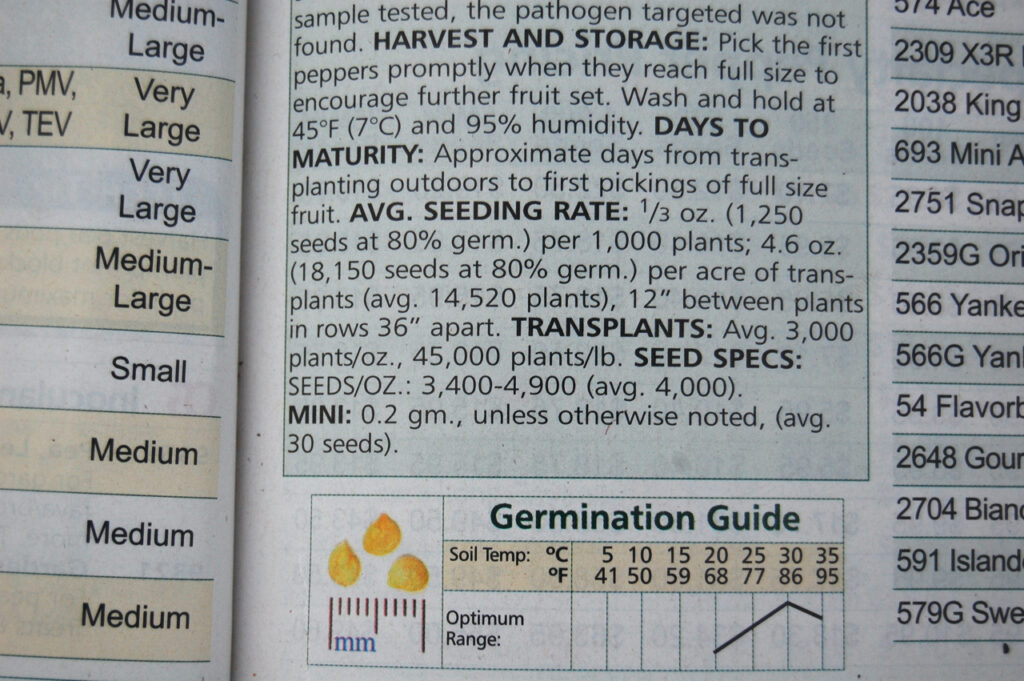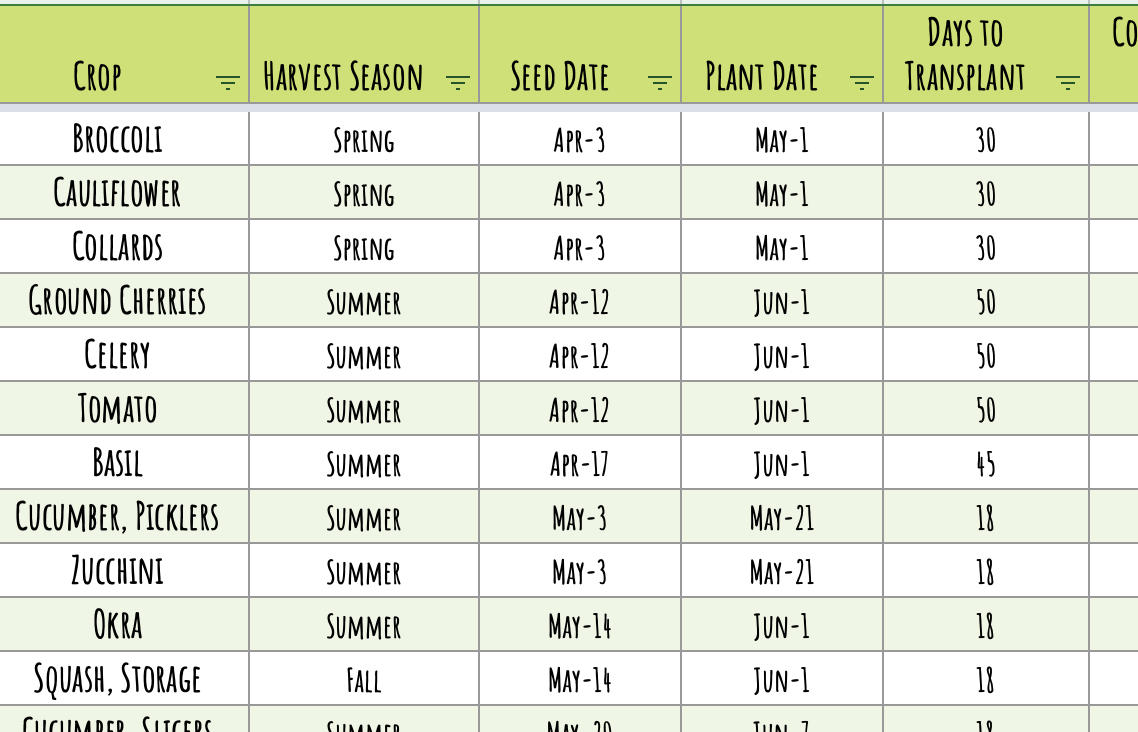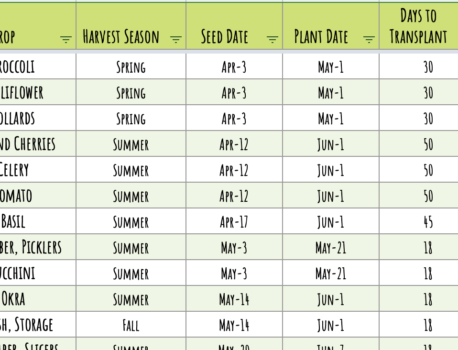Cozying up with seed catalogs and a nice cup of tea to plan the garden is something I and most growers I know look forward to each winter. However, many people find this process frustrating and are left with lots of questions in the process such as exactly when to start vegetable seeds indoors?
Below are key tips for developing a seeding calendar/schedule.

When to Start Vegetable Seeds Indoors
One of the most commonly asked questions I see on gardening forums is when to start tomato seeds, specifically. As with most things, the answer is “it depends.” If you want your tomatoes to be a foot tall and filling a 6 inch pot, it’s going to take longer to grow than if you are happy to plant out a 6 inch tall tomato in a 3 inch pot.
Luckily there are some general rules that can help you get your plants seeded on time for the best results.
Cold vs. Warm Season Plants
Most growers in Michigan (zone 5) wait until May or June to begin “transplanting out” their seedlings. Plants that are more cold tolerant can go out before the risk of frost has passed in April and May. Others aren’t quite as hardy and need to wait until late May or early June before they can be planted outside:

Cold tolerant plants: onions, leeks, kale, collards, Swiss chard, spinach, lettuce, pac choi, cabbage, broccoli, Brussels sprouts…
Warm season plants: tomatoes, peppers, eggplant, basil, cucumbers, melons, squash, zucchini, pumpkins…
You’ll want to take this into consideration when planning your growing space. Make sure to give your plants several weeks to grow inside before planting them out. Roots should be well formed and should hold the soil together. Make sure not to let your plants become too “root-bound” in their cells; this can stress the plant and cause the roots to have difficulty growing out once planted in the ground, stunting their full potential.
How to Make a Seeding Schedule
There are several things to consider when making your seeding schedule:
Spring vs. Fall Planting – Many crops can be planted in the spring and the fall for an early crop and a late crop. For example, early carrots can be planted in spring for fresh eating in the summer and late carrots can be planted in late summer for fall eating and winter storage. Different varieties are suited for different seasons. Pay attention to this in the descriptions in your seed catalogs.

Days to Transplant – How long it takes for seedlings to grow to a mature transplant. This number will vary depending on the environmental conditions of your seed starting set up (generally, the warmer it is and the more light you have, the faster things will grow). The dates listed on our Seed Starting Schedule are for an avg temp of 60-70 degrees (higher during germination) with about 16 hours of light per day.
Seed Date – The date to seed your transplants indoors or direct seed plants outdoors (this is the plant date minus the days to transplant)
Plant Date* – When plants are transplanted outdoors
Container Size – Our schedule designates small, medium & large; check out your options sizing chart here
Potting Up – “Potting up” makes sense for crops that take longer than about 4-6 weeks to grow to size before they’re ready to plant out. This includes tomatoes, peppers, and eggplant plus a couple of others. Once plants have outgrown their initial container it’s time to put them in something larger.
*Note that you should plan to harden off your plants, which means to expose them to a week of increasingly more adverse conditions. This will help to avoid transplant shock once they’re planted in the ground.
Notes about seed starting:
Succession planting – Several crops can be planted multiple times throughout the season to ensure a continuous harvest. These include things like greens (kale, salad, lettuce, etc.), cucumbers, summer squash/zucchini, and annual herbs (basil, dill, cilantro, etc.)
Onions – Onions can be challenging to grow from seed. They take a long time and have funny light requirements. You’ll need to select varieties with day lengths suited to your locale; long day onions require 14-15 hours of daylight to bulb up, short day varieties will bulb with about 10 hours of daylight, and day neutrals form bulbs regardless of day length. Pay attention to this when buying seeds/sets/transplants!
Flowers – They come in all shapes and sizes and have equally as many varying needs. Some prefer direct seeding (e.g., zinnias, sunflowers) while others like to be transplanted (e.g., snapdragons, statice); some take a few weeks to grow to size while others can take several; some need light to germinate and others dark. Your seed catalog/packet should have the details you need.
10 day forecast – Check the weather before your plant your babies! If you have a warm spell, make sure it’s going to stick around before you plant. Otherwise your more tender crops like tomatoes and basil may get nipped by the cold and not recover!


